Share the post "Positions In Soccer (Best, Easiest, and Popular)"
There are 4 basic positions in soccer and 9 more advanced positions. Some are easier, better, and more popular than others. I’ll show you the skills and demands needed to know what position is best for you. Let’s look at the 4 basic positions and answer these questions. Later, we will look at each position to decide which position is best for you! We’ve got it all covered here.
- 4 basic positions in soccer
- Easy soccer positions
- Most fun position in soccer?
- What is the best position in soccer?
- What’s the most popular position in soccer?
- How do I find my best position in soccer?
- What soccer position should I play?
- What does your soccer position say about you?
- What’s the most valuable position?
4 basic positions in soccer
The 4 basic positions in soccer are goalkeeper, defender, midfielder, and forward.
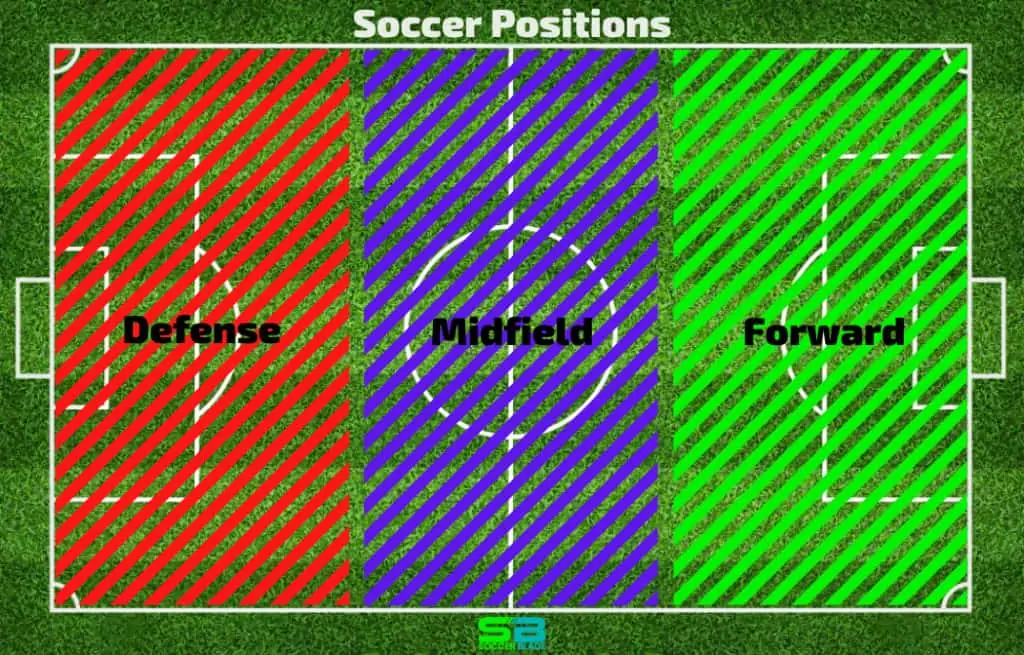
Here’s a breakdown of the roles and responsibilities of each position.
Goalkeeper
Goalkeepers (or goalies) protect the frame. It’s their job to stop the ball from crossing the goal line for a goal. Goalies are the only players in soccer allowed to use their hands.
Goalkeeper: Challenges and demands
Goalkeepers often have to dive or jump to stop goals. This takes athleticism and is demanding on the body. Also, they need great concentration. Goalies might not be called to action for long, but they must be ready when a shot comes.
Goalkeeper: Easier parts
Goalkeepers have to run the least out of any soccer player. This means they get more time to rest and recover.
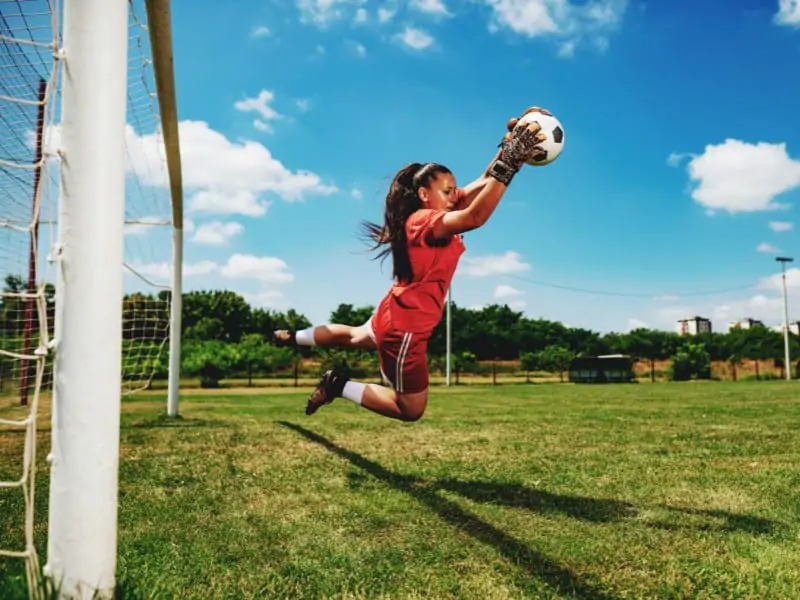
Defender
Defenders protect the goalie. Their job is to prevent the other team from scoring goals. They form a line before the goalie and stop attacks from the opposition team.
Defender: Challenges and demands
Defenders, who are often speedy players, have to stop attackers. This takes good positioning and communication with other defenders. As a protection for the goalie, defenders are under pressure to stop the ball from passing them.
Defender: Easier parts
Defenders don’t have to run too much. They don’t have to hold the ball much, which is difficult. Clearing it away from the goal is their main job.
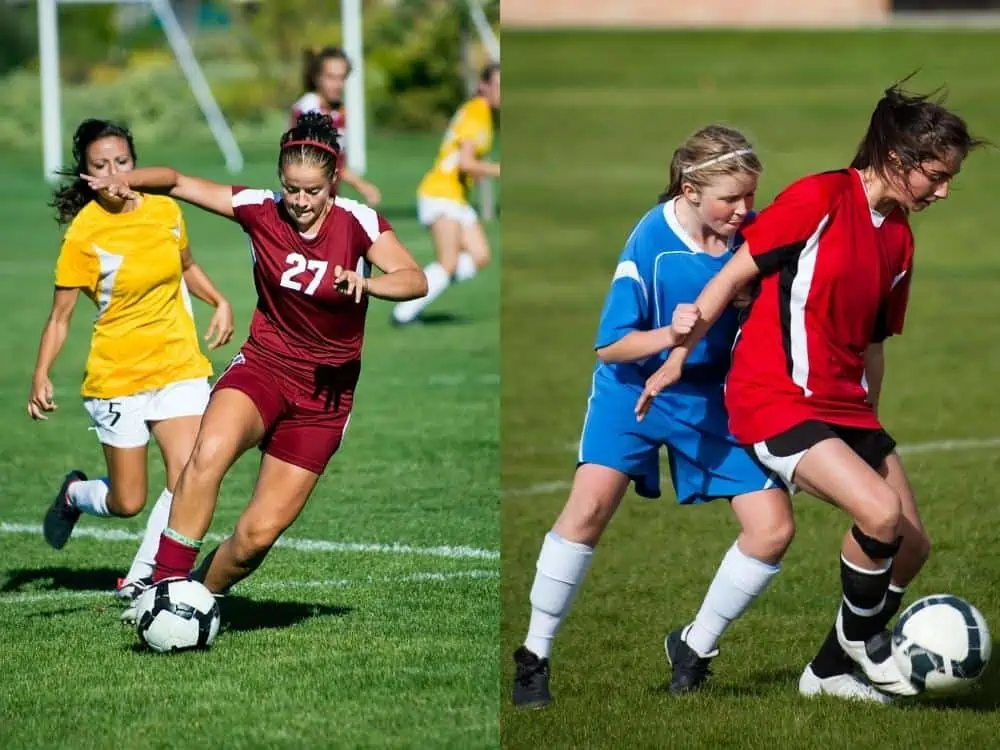
Midfielder
Midfielders are the link between defenders and forwards. They have to help defenders stop opposing attacks and help forwards score goals. Positioned in the middle of the field, midfielders are the ‘engine’ of a soccer team.
Midfielder: Challenges and demands
Midfielders run the most out of any soccer player. That’s why they’re the ‘engine’ of the team. They must also hold the ball, pass well, defend, and attack, creating chances for forwards or scoring goals.
Midfielder: Easier parts
There isn’t as much pressure on midfielders to defend or attack. For instance, if the team concedes goals, they won’t get blamed like goalies or defenders.
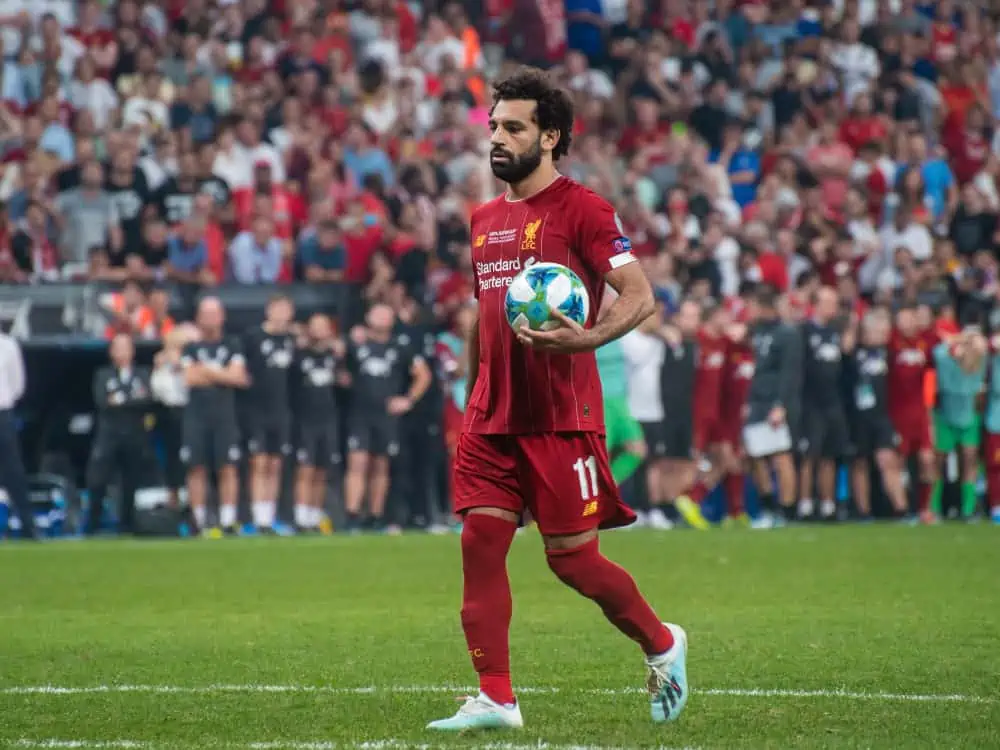
Forward
Forwards attack the opposing goal line. It’s their job to score goals. They are positioned close to the opposing team’s goalie, ready to score goals when the chance comes. Let’s look at the 4 basic positions, outline challenges and demands, and identify easier parts.
Forward: Challenges and demands
forwards must score goals. There’s a lot of pressure on forwards to do that. Also, they go up against defenders who are often bigger and stronger than them. Being a forward is physically demanding.
Forward: Easier parts
Forwards don’t have to run as much as midfielders. They also have minimal defensive duties to stay near the opposition’s goal.
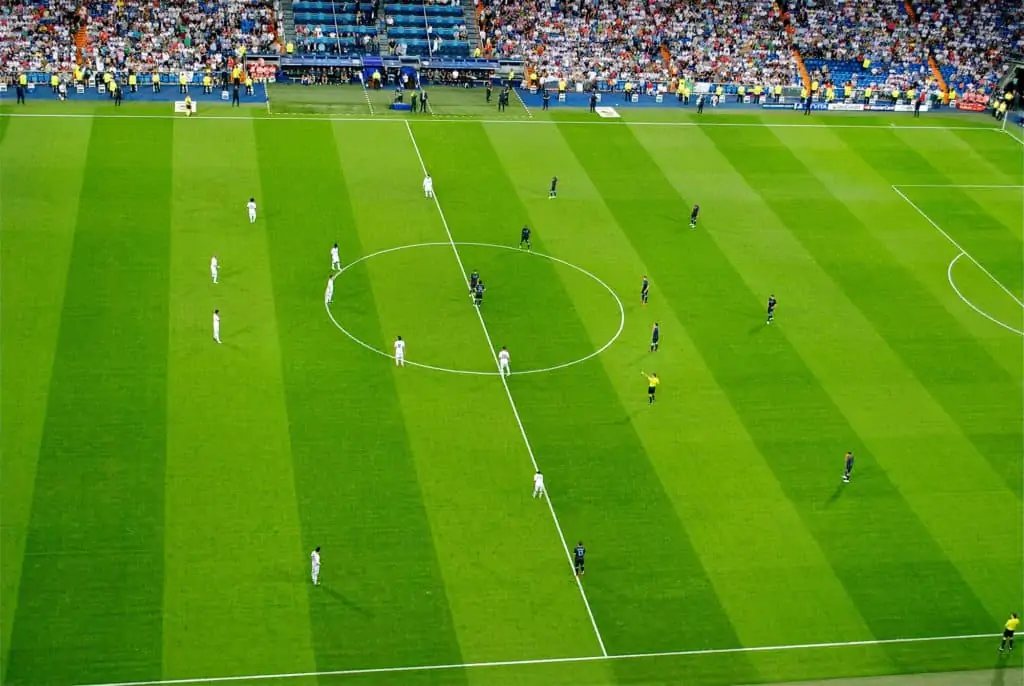
Easy soccer positions
An easy position for you as a soccer player is where you have the most attributes. It will be difficult if you’re bad at shooting and a striker. Find a position that fits well for you and your team. There’s no outright easy position in soccer. Each position has unique challenges, demands, and some easier parts.
What is the easiest position in soccer?
The central positions are the most difficult. That leaves us to choose between the wingers and the fullbacks for the easiest positions in soccer. Let’s go into a little more detail about 3 of the 4 basic positions. The goalkeeper won’t feature here because it’s one of the hardest positions, if not the hardest.
- Defender – this includes central defenders and right/left fullbacks.
Central defenders are positioned in front of the goalie, while fullbacks stay at the sides of the field. Often, because they’re positioned in front of the goalie, central defenders see more of the action when the opposing team attacks than fullbacks do.
- Midfielder includes defensive midfielder, central midfielder, attacking midfielder, and right/left-wingers.
Defensive midfielders play directly in front of the central defenders, while central midfielders are positioned on either side of the center circle. Attacking midfielders play in the center close to the forwards, and wingers stay at the sides, further up the field than fullbacks.
- Forward – this includes center-forward and second striker.
Center-forwards play directly before the opposition goal, while second-strikers play slightly behind the center-forwards.
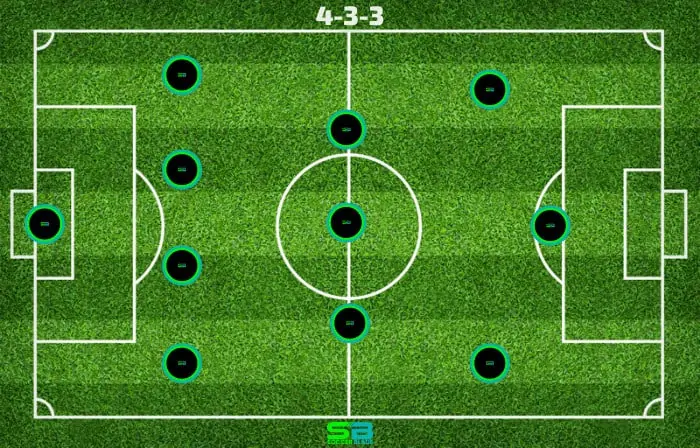
Now that we have a better idea of the various roles within these 3 basic positions, let’s choose the easiest. Because soccer frames are centered on the field, most of the play happens in central areas. This means the players in central positions see more action. And the more active players are involved, the harder it’s for them.
- Wingers see more of the ball than fullbacks and have a lot of responsibility to create chances for forwards to score goals.
Also, as well as running down the touchlines, wingers have to cut inside to central areas more than fullbacks do.
- Fullbacks don’t have to run as much as wingers, and a fullback doesn’t have as much responsibility in defending as central defenders.
There isn’t as much pressure to stop the opposing team for fullbacks. So, the fullback can be seen as the easiest soccer position because they don’t have to run as much as other positions. They see less of the ball at the sides (unless you play for Liverpool), and there’s less pressure to defend compared to central defenders.
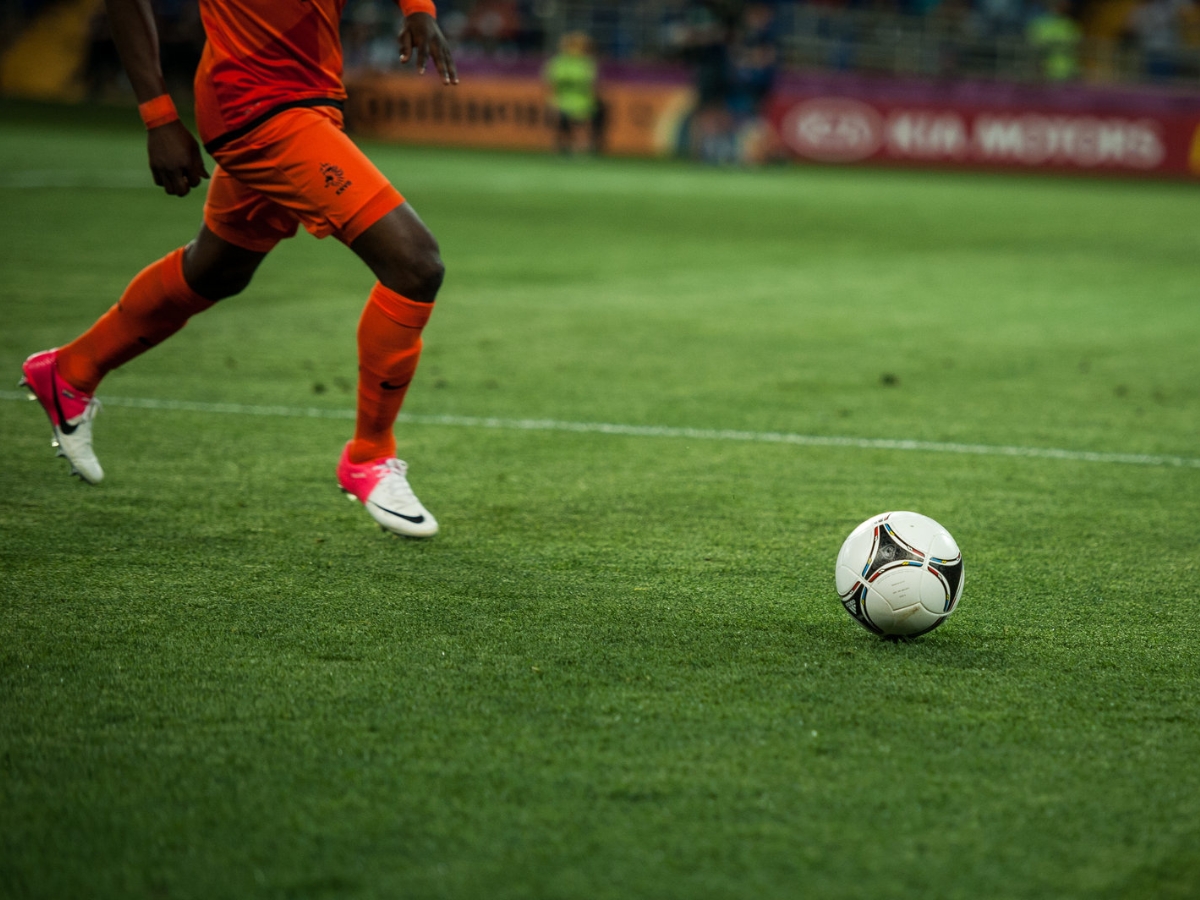
Distance Covered by Position
The most distance covered in games for each soccer position involves averages, as these values can vary significantly based on the player’s style, team tactics, and the specific demands of each game. The following table provides a general idea of the average distances covered by players in different positions:
| Position | Average Distance Covered per Game | Notes |
|---|---|---|
| Goalkeeper | 4-6 km | Least distance covered; mostly within the penalty area. |
| Center Back | 9-11 km | Involves both defensive positioning and advancing for set pieces. |
| Full Back/Wing Back | 10-12 km | High work rate, covering length of the pitch; more in modern attacking roles. |
| Central Midfielder | 11-13 km | High endurance role, covering both defensive and offensive duties. |
| Defensive Midfielder | 10-12 km | Similar to central midfielders but with more focus on defensive coverage. |
| Attacking Midfielder | 10-12 km | Involves forward runs and tracking back; distance varies with tactical role. |
| Winger | 10-12 km | High-intensity sprints and tracking back; distance depends on playing style. |
| Forward/Striker | 9-11 km | Involves bursts of high-intensity sprints; distance varies based on role (e.g., target man vs. mobile forward). |
Key Points:
- These are average estimates and can vary based on the game’s intensity, the player’s role, and the team’s playing style.
- Modern tactics and the evolving nature of certain positions (like full-backs or wingers) can lead to higher distance coverage.
- Midfielders, especially box-to-box types, generally cover the most distance.
- The data is based on general observations and can vary from league to league and from player to player.
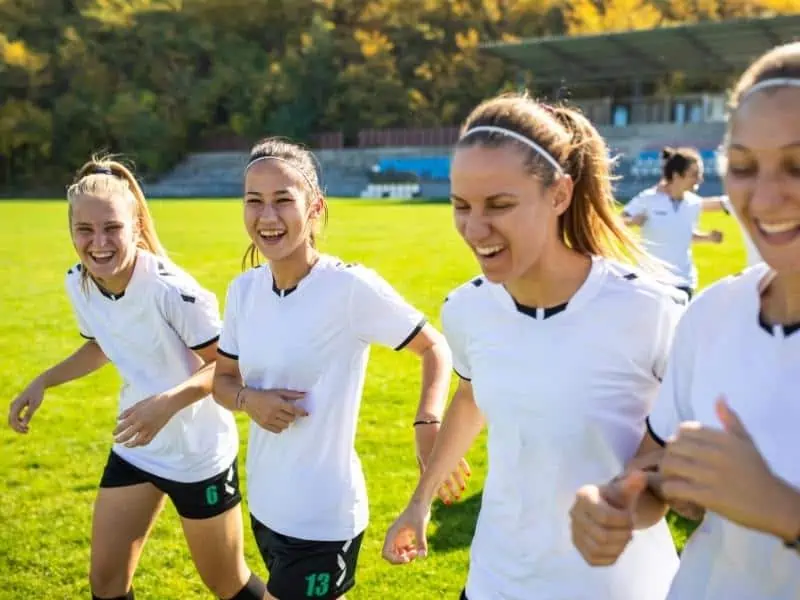
Most fun position in soccer?
The most fun and popular position is a striker/forward who scores goals, wins games, and gets the glory. But this is not the same for all players. Depending on the player, any position can be fun in soccer. The goalkeeper can be super fun for players who like using their hands to jump, dive, and stop goals.
Being a defender can be fun for players who like to communicate, organize teammates, and block the opposing team from scoring goals. Like running a lot and being involved in defense and attack? Midfield will be heaps of fun. For players who love seeing the ball crossing the goal line, get forward and have lots of fun.
So, there isn’t one most fun position in soccer. All of the positions can be fun. It’s down to the player, and all players can have fun in soccer.
Goals Scored by Position
Goal scorers by position in the Premier League are based on their primary playing positions and tallying their goals. This table will provide a general overview, focusing on typical positions rather than individual players. The data can vary significantly from season to season and is influenced by the playing style of each team and the individual qualities of the players.
| Position | Average Goals per Season | Notes |
|---|---|---|
| Goalkeeper | 0-1 | Goals by goalkeepers are extremely rare, usually from set pieces or penalties. |
| Defender (Center Back) | 1-5 | Goals mainly from set pieces like corners and free kicks. |
| Defender (Full Back/Wing Back) | 2-5 | Attacking full-backs may score more, especially in teams with offensive tactics. |
| Midfielder (Defensive) | 1-4 | Defensive midfielders score less but may contribute in set-piece situations. |
| Midfielder (Central/Box-to-Box) | 3-8 | Central midfielders have varied scoring records, depending on their role in the team. |
| Midfielder (Attacking) | 5-12 | Attacking midfielders are often significant contributors to team goals. |
| Winger | 5-15 | Wingers in the Premier League are often key goal scorers, especially in teams that rely on wide play. |
| Forward/Striker | 10-25 | Strikers are typically the highest goal scorers in the team, with leading strikers in top teams scoring 20+ goals. |
Key Points:
- These figures are averages and can vary widely. For instance, a striker in a top team might score significantly more than one in a lower-ranked team.
- Some players, especially midfielders and wingers, might have high assist numbers in addition to their goal tally.
- The playing style of the team and the league’s overall tactical trends greatly influence these numbers.
- For the most accurate and current statistics, it’s advisable to refer to official Premier League statistics or detailed football analytics websites.

What is the best position in soccer?
The best position depends on the player’s strengths and weaknesses. Below, we look at how to find your position based on your likes, dislikes, strengths, and weaknesses. Again, this one is down to individual players. The best position for one player might not be the best for another.
For instance, if a player can’t catch the ball when it’s reaching the goal, the goalkeeper isn’t in the best position. When a player doesn’t like blocking the ball or tackling opposing players, the defender isn’t the best position for them. Or midfielder, either. Players who don’t have the endurance to run a lot won’t be best positioned as midfielders.
If a player can’t shoot on the frame, forward isn’t their best position. There’s no one best position in soccer because it comes down to the individual players and what they’re good at or not so good at.
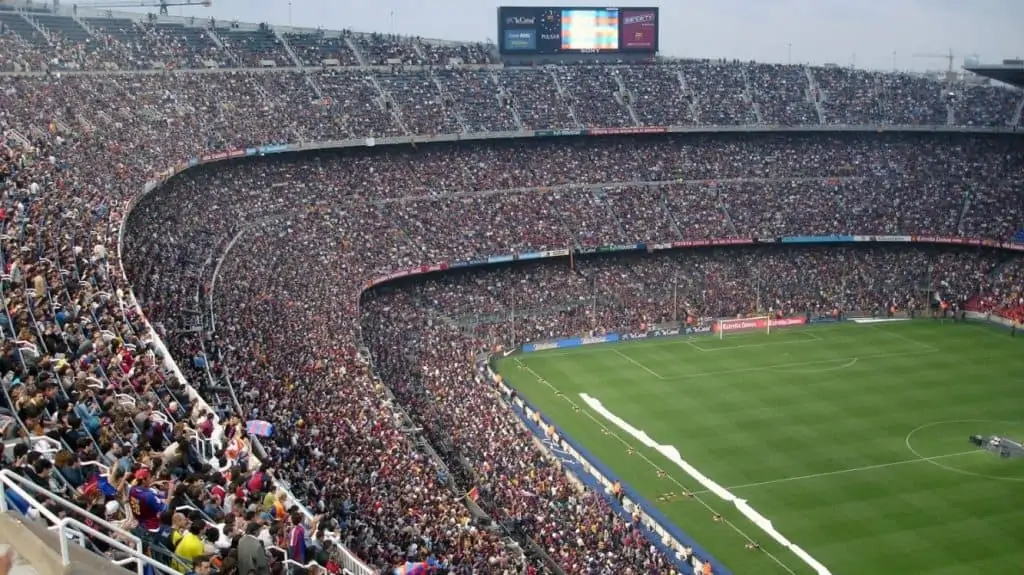
What’s the most popular position in soccer?
A forward – who doesn’t love scoring goals? Who doesn’t feel great scoring the winning goal for their team? Seeing the ball cross the goal line is a fantastic sight. It’s important to note there’s more to soccer than simply scoring goals, but scoring feels great. That’s why a lot of players want to play as forwards.
Getting close to the opposition’s goal increases the chance of scoring and being the hero. That’d make forward the most popular position in soccer.
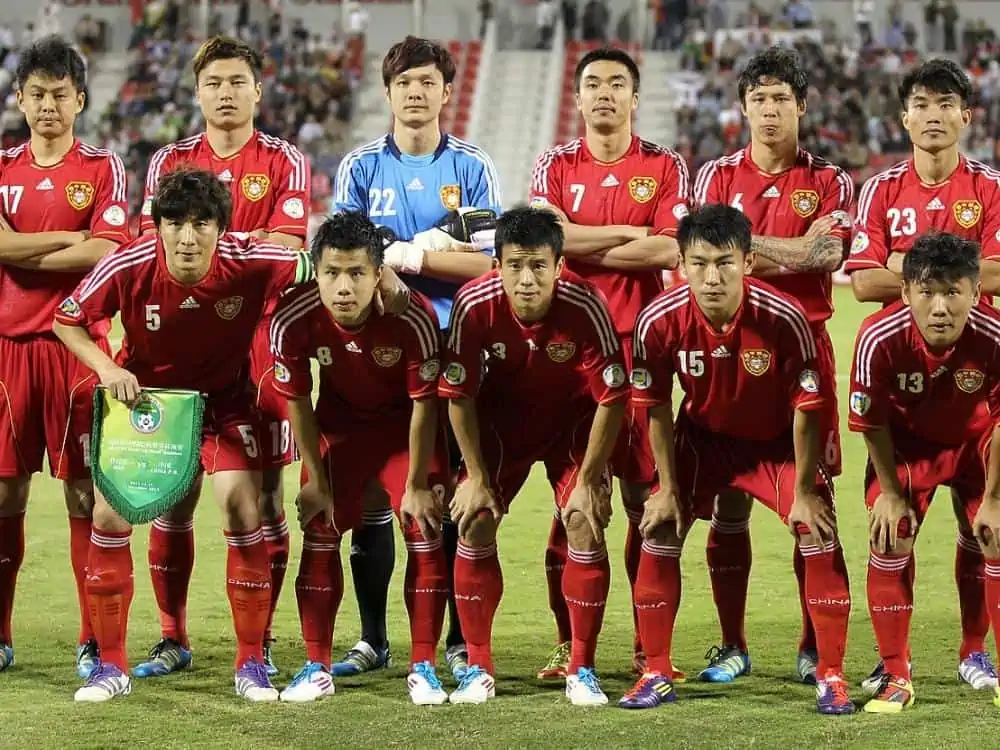
How do I find my best position in soccer?
To answer this question, we can examine a player’s likes and dislikes and strengths and weaknesses. Let’s create general player profiles for each position as a guide, and you can see what position suits you best.
Goalkeeper
- Likes – jumping, diving, catching, blocking, kicking/throwing long.
- Dislikes – running, shooting, tackling.
- Strengths – concentration, tall, strong, agile, kicking, throwing, jumping.
- Weaknesses – running, shooting, passing, ball control.
Central Defender
- Likes – blocking, tackling, organizing, communicating.
- Dislikes – running long distances, shooting.
- Strengths – positioning, tall, strong, blocking, and tackling.
- Weaknesses – running, shooting, ball control.
Fullback
- Likes – sprinting, blocking, tackling, crossing.
- Dislikes – running long distances, shooting.
- Strengths – positioning, fast, strong, blocking and tackling.
- Weaknesses – shooting, passing.
Defensive Midfielder
- Likes – running long distances, blocking, tackling, passing.
- Dislikes – sprinting, shooting.
- Strengths – endurance, strength, blocking and tackling, passing, ball control.
- Weaknesses – shooting, speed.
Central Midfielder
- Likes – running long distances, blocking, tackling, passing, shooting.
- Dislikes – sprinting.
- Strengths – endurance, strength, blocking and tackling, shooting, passing, ball control.
- Weaknesses – speed.
Attacking Midfielder
- Likes – running long distances, passing, shooting, sprinting.
- Dislikes – blocking and tackling.
- Strengths – endurance, speed, shooting, passing, ball control.
- Weaknesses – blocking and tackling.
Winger
- Likes – sprinting, passing, shooting, crossing.
- Dislikes – running long distances, blocking, and tackling.
- Strengths – speed, shooting, passing, crossing, ball control.
- Weaknesses – endurance, blocking, and tackling.
Second Striker
- Likes – shooting, sprinting, passing.
- Dislikes – running long distances, blocking, and tackling.
- Strengths – speed, shooting, passing, ball control.
- Weaknesses – endurance, blocking, and tackling.
Center-forward
- Likes – shooting, sprinting.
- Dislikes – running long distances, blocking and tackling, passing.
- Strengths – speed, shooting, ball control.
- Weaknesses – endurance, blocking and tackling, ball control.
This is only a guide to give you an idea of your best position. It’s a good idea to play in the positions that interest you to get an even better idea of your best position in soccer. Sometimes, a player might start in one position and move to another. For example, Lionel Messi played in a few different positions as a youngster moving through the levels at Barcelona.
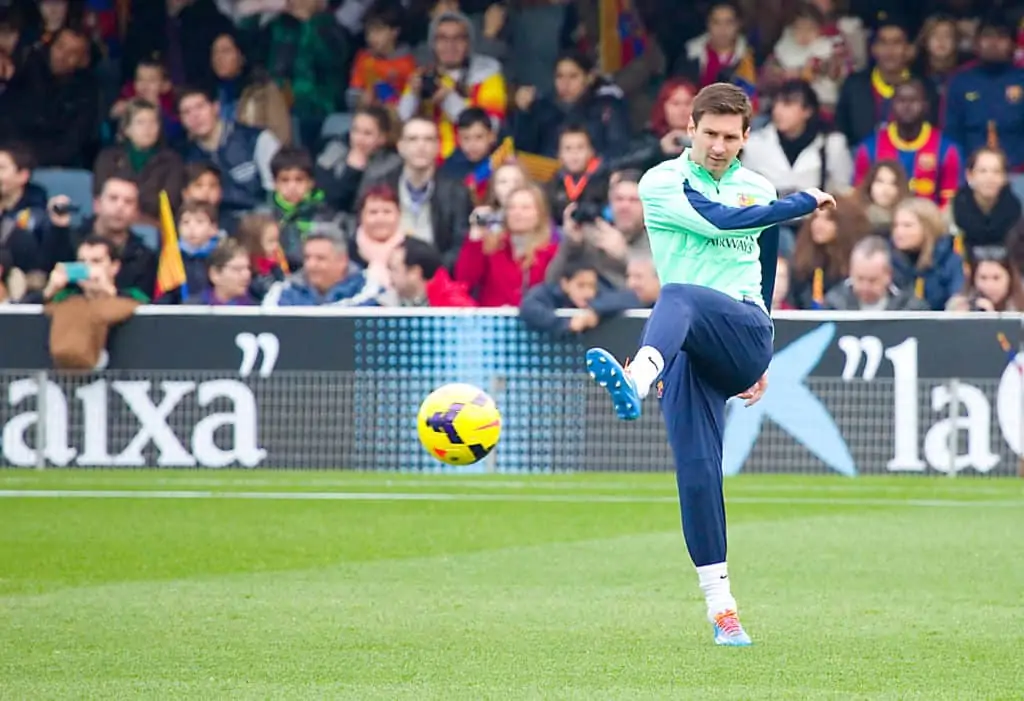
Messi finding his best position
Even when Messi began his career with the first team, he played as a winger. Then, Pep Guardiola started using him as a false 9 – an unconventional striker who moves deep into midfield to draw central defenders out of position. So, try out some positions based on your likes and dislikes, strengths and weaknesses, and find the best position.
What soccer position should I play?
This depends on what you want to achieve. Try out different positions if you’re playing for fun with your friends. But if you’re going to play in your best position for a team and win games, then more thought is needed. As shown in the previous section, consider what you like and dislike and your strengths and weaknesses. This will give you a good idea of what position you should play.
For instance, if you don’t have good running speed, fullback or winger probably isn’t the best position. But maybe your ball control, passing, blocking, and tackling are really good. That would likely mean central midfield or defensive midfield would be a good position for you.
Weigh up what you like/dislike to do in soccer against your strengths/weaknesses to find the position you should play.
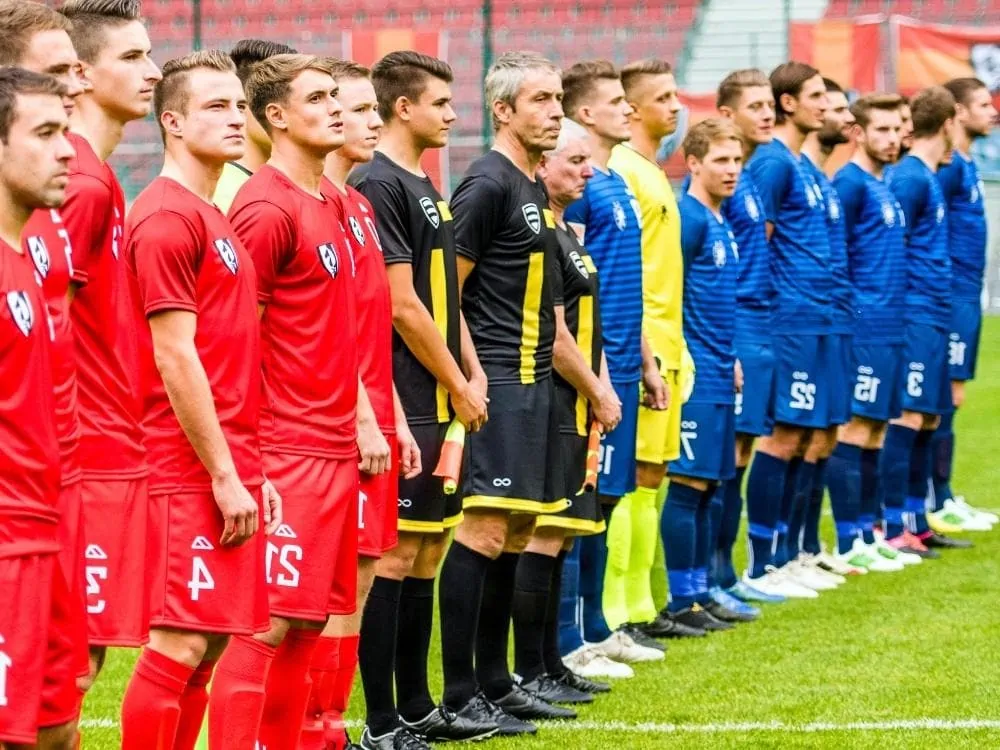
What does your soccer position say about you?
Your soccer position can say a lot about you. This might be physical, like speed for a winger and endurance for a central midfielder, or mental, like concentration for a goalkeeper.
- Or maybe you’re a center-forward. That could say you’re obsessed with scoring goals. You dream about scoring.
- For those central defenders, it says you’re a good organizer and communicator. You’re also strong and put your body on the line for your team.
Whatever your soccer position says about you, remember that every player has their strengths, and you bring value to the team no matter what position you play.
What’s the most valuable position?
In terms of money, generally, the attackers who score cost more for teams to transfer and have higher wages – based on this, attackers are the most valuable. Although times are changing a little, and other positions are costing more. For example, a defensive midfielder, Declan Rice moved from West Ham United to Arsenal for $131 million in 2023.
Soccer is a team sport. That means no one position is more valuable than another. All soccer positions are equally valuable. Without goalkeepers and defenders, the team would leak too many goals, and winning games would be hard.
The midfielders link defense and attack; without them, moving the ball from one end of the field to the other would be hard. They also help defend against goals and help create/score goals. The forwards score the most goals in soccer. If a team doesn’t score goals, they can’t win games. The best the team could do would be a 0-0 tie. So, forwards are valuable.
But scoring goals is no good if the other team scores an equal amount or more. That’s why all positions in soccer are equally valuable.
Share the post "Positions In Soccer (Best, Easiest, and Popular)"
Joel is a seasoned soccer journalist and analyst with many years of experience in the field. Joel specializes in game analysis, player profiles, transfer news, and has a keen eye for the tactical nuances of the game. He played at various levels in the game and coached teams - he is happy to share his insight with you.



